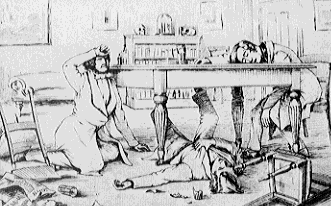Who was the first doctor to use chloroform as an anaesthetic?
 November 12, 1847 — Scottish obstetrician James Young Simpson is the first to use chloroform as an anesthetic today in 1847.
November 12, 1847 — Scottish obstetrician James Young Simpson is the first to use chloroform as an anesthetic today in 1847.
Yes, Sir Humphry Davy used the first anaesthetic in 1799 — nitrous oxide (aka: laughing gas). But Simpson discovered the properties of chloroform while sitting in his dining from with friends Drs Keith and Duncan. After inhaling the chemical they found that a general mood of cheer and humor set in, then suddenly all of them collapsed only to regain consciousness the next morning.
Simpson knew, as soon as he woke up, that he had found something that could be used as an anaesthetic.
Historians remind us that if Dr. Simpson had inhaled too much he would have died, and chloroform would have been seen as a dangerous substance. If he inhaled slightly less it would not have put him to sleep. “It was his willingness to explore the possibilities of the substance that set him on the road to a career as a pioneer in the field of medicine,” explains Laing Gordon, in his book, Sir James Young Simpson and Chloroform.
Considered a genius in his field, Simpson completed his final examination at the age of 18 but had to wait two years before he got his licence to practice medicine. He was appointed to the Chair of Medicine and Midwifery at the University of Edinburgh at age 28. And in 1838 he designed the Air Tractor, the earliest known vacuum extractor to assist childbirth; the method did not become popular until the invention of the ventouse more than a century later.
On the day of Simpson’s funeral, in May 1870, a Scottish holiday was declared, including the banks and stock markets. More than 100,000 citizens lined the funeral cortege on its way to the cemetery, and 1,700 colleagues and business leaders reportedly took part in the procession itself.
Sources
Words of Wisdom
All pain is per se and especially in excess, destructive and ultimately fatal in its nature and effects.





